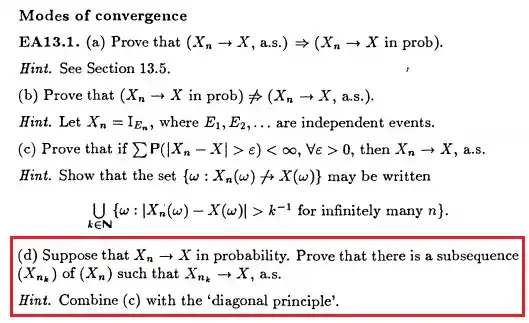I think I can guess what "diagonal principle" means, and I think it is related to two of your guesses: Cantor diagonalization and double sequences. It is a method for constructing subsequences.
First produce one subsequence $X_{i(1,1)}, X_{i(1,2)}, X_{i(1,3)},\ldots$ (perhaps satisfying some property of interest to your problem).
Then produce a second subsequence, a subsequence of $X_{i(1,n)}$ written as $X_{i(2,1)}, X_{i(2,2)}, X_{i(2,3)},\ldots$ (satisfying a stronger version of the property of interest).
Then produce a third subsequence, a subsequence of $X_{i(2,n)}$ written as $X_{i(3,1)},X_{i(3,2)},X_{i(3,3)},\ldots$ (satisfying some still stronger version of the property of interest).
Continue like this in an inductive procedure to define a sequence of sequences $X_{i(m,n)}$ where, for each $m$, the sequence $(X_{i(m,n)})_{n=1,2,3,...}$ is a subsequence of the sequence $(X_{i(m-1,n)})_{n=1,2,3,...}$.
The diagonal subsequence is defined to be $(X_{i(q,q)})_{q=1,2,3,...}$. It has the nice property that for each $m$ it is eventually a subsequence of $X_{i(m,n)}$. One can then very often prove that the diagonal subsequence inherits certain properties from each of the subsequences $X_{i(m,n)}$ for each $m$, which taken together might imply a surprisingly strong property.
